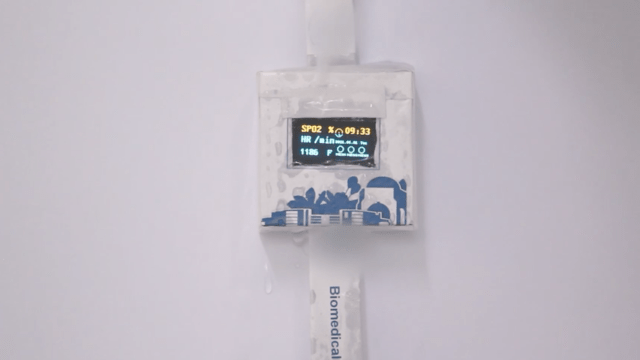While these days you’re more likely to buy a smartwatch that can withstand water, now there are smartwatches that can dissolve in water. Researchers from Tianjin University used a two-metal nanocomposite material to create a fully functioning prototype smartwatch that dissolves when submerged.
But… why? According to the researchers’ paper in ACS Applied Materials & Interfaces, dissolvable wearables could be one solution for combatting e-waste. While larger electronics can be dissembled to recycle parts, smaller devices like smartwatches and fitness bands require a much more difficult process. Components must be salvaged by hand, and that could involve dangerous processes like open burning and acid leaching. Following that line of thought, the researchers posited that a dissolvable smartwatch could solve those issues.
The challenge here is that smartwatches and fitness bands have to be durable. While not all are safe for the pool or shower, most claim to withstand chores like washing dishes, sweaty workout sessions, and getting caught in a rainstorm.
The researchers modified a zinc-based nanocomposite material that was previously used to create dissolvable, temporary circuits. To make the material conductive enough for consumer electronics, the researchers added silver nanowires. They then printed the solution to a water-degradable polymer and “solidified the circuits by applying small droplets of water that facilitate chemical reactions then evaporate.”

Using this method, the researchers created multiple circuit boards that were then housed inside a 3D-printed polyvinyl alcohol case. (Polyvinyl alcohol is a water-soluble and biodegradable material.) The prototype smartwatch also included sensors that could read heart rate, step count, and blood oxygen levels. It was also capable of connecting to a phone app via Bluetooth. During testing, the researchers found that the device was capable of accurately recording biometrics, as well as pushing emojis, caller ID, and messages from a paired phone. It was also able to withstand being splashed with water droplets, indicating the smartwatch could tolerate a degree of humidity. However, when submerged for 40 hours in water, the prototype completely disintegrated. All that was left behind were components like its OLED screen and microcontroller.
E-waste is a legitimate problem. In 2019, the world generated 53.6 million metric tons of e-waste, of which only 17.4% was recycled. A few years earlier, the amount of global e-waste was enough to build 4,500 Eiffel Towers. The problem is also only getting worse thanks to planned obsolescence. As companies rapidly add new features to gadgets every year — or stop updating older ones — consumers are incentivised to throw away perfectly fine devices. Sure, tech giants have made a big fuss in recent years about their sustainability efforts, and 2020 saw a reduction in e-waste due to the pandemic — but it’s not enough. Dissolvable electronics won’t be hitting shelves anytime soon, but perhaps one day, it might help make recycling a bit easier.
